#Tatsuo Hamada
Explore tagged Tumblr posts
Text
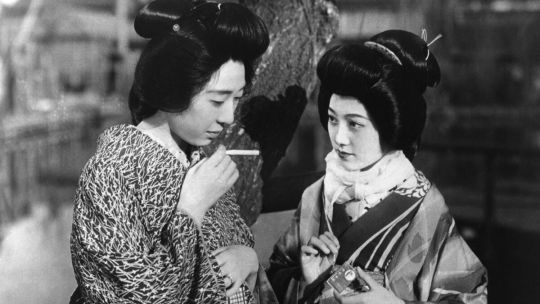


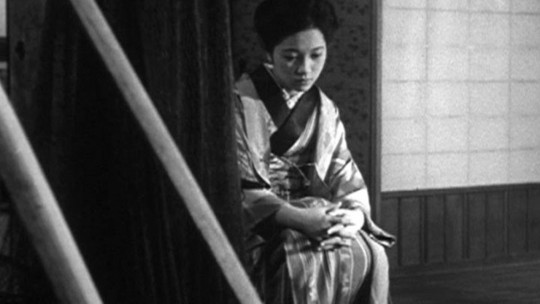
Apart From You (Mikio Naruse, 1933)
Cast: Mitsuko Yoshikawa, Akio Isono, Sumiko Mizukubo, Reikichi Kawamura, Ryuko Fuji, Yoko Fujita, Tomio Aoki. Screenplay: Mikio Naruse. Cinematography: Suketaro Inokai. Art direction: Tatsuo Hamada.
One of Mikio Naruse's earliest surviving silent films, Apart From You is a fable in support of filial devotion. An aging geisha, Kikue (Mitsuko Yoshikawa), is trying to raise a teenage son, Yoshio (Akio Isono), but he has become ashamed of his mother's profession. When she discovers that Yoshio has been cutting school and has joined a gang, her friend and fellow geisha, the pretty young Terugiku (Sumiko Mizukubo), tries to help Kikue by showing Yoshio what her own dysfunctional family is like. The contrast with his own self-sacrificing parent inspires him to give up his adolescent rebellion. Though the film teeters on the edge of sentimentality, it's saved by the complexity of the characters, the performances of the actors, and the fluidity of the direction and camerawork.
2 notes
·
View notes
Text
The opening of Yasujiro Ozu's Late Spring is deceptively calm: the usual establishing shots of landscape and buildings and trains, the kind of images with which Ozu typically punctuates his narratives, and a group of women gathering for a tea ceremony. One of the women is Noriko, whose brilliant smile is also deceptive. This is the first film in Ozu's so-called "Noriko trilogy," to be followed by Early Summer (1951) and Tokyo Story (1953), in each of which Setsuko Hara plays a woman named Noriko. The three Norikos have nothing in common except that they are all unmarried. (In Tokyo Story she is a widow.) The Noriko of Late Spring lives with her father, Shukichi, who is played by Ozu regular Chishu Ryu. (In Early Summer, Ryu plays Hara's brother, and in Tokyo Story her father-in-law.) The deceptions of what might be called the "get-acquainted" section of Ozu's film, which establishes for us the relationships among the characters, lie in the apparent happiness and contentment of father and daughter and the untroubled world in which they live. But Late Spring was filmed only four years after the end of the war that devastated Japan, which was still under occupation by American forces. The wounds and pain of the country and its people are invisible in the film, partly because of occupation censorship, but they provide a kind of tension in the viewer who knows what the characters must have suffered. There is only a brief mention of this in Late Spring: Noriko has been to the doctor and reports that her health has improved. Another character's reference to "forced work during the war" sheds some light on what may have caused her illness. Later, Noriko and her father visit Kyoto, and he remarks how much nicer it is than "dusty" Tokyo, obliquely referencing wartime destruction. The central deception, however, lies in Noriko's apparent contentment with her unmarried state: She feels it is her duty to spend her life caring for her widowed father, and brushes off any suggestions that at 27 she should really be thinking about getting married -- or worse, that her father might choose to remarry. She calls the second marriage of one of her father's friends "filthy." We who have seen this situation before, however, realize that the deception Noriko is perpetrating is on herself. Perhaps because she has lived through so much change and upheaval, Noriko is trying to persuade herself that her current happiness serving her father can be made permanent. And so she suffers a shock when her father displays interest in a beautiful widow, and another when he suggests that she might meet the young man her Aunt Masa thinks would be a suitable husband for Noriko. What Ozu and his frequent collaborator Kogo Noda establish here, working from a novel called Father and Daughter by Kazuo Hirotsu, is worthy of Henry James or Jane Austen -- I think particularly of Austen's Emma Woodhouse and her self-deluding attachment to her father. Eventually, Noriko is persuaded into marriage -- in a masterstroke of direction we never even see the groom -- by her father's lie: He claims that he has been planning to remarry, thereby eliminating any objection Noriko could have to seeking her own path to fulfillment. The film ends with a melancholy image of Shukichi alone, peeling an apple -- a kind of Jamesian twist on an Austenian situation. This magisterial example of Ozu's late style -- low camera angles, absence of pans and dissolves, emphasis on the somewhat claustrophobic interiors of the Japanese home -- is reinforced by Tatsuo Hamada's art direction and Yuharu Atsuta's cinematography, but most of all by the superb performances of Hara and Ryu.






Setsuko Hara in Late Spring (1949)
235 notes
·
View notes
Photo


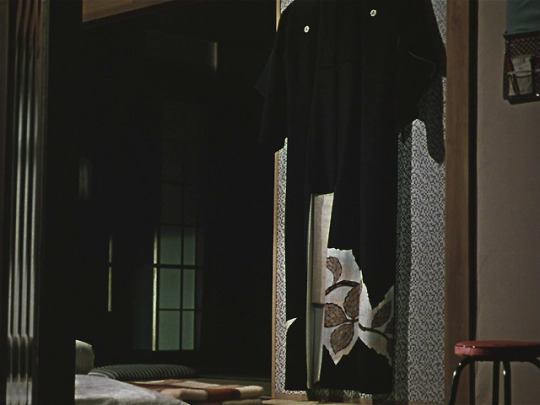

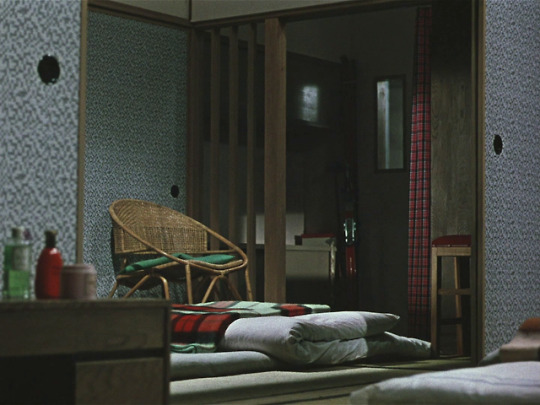
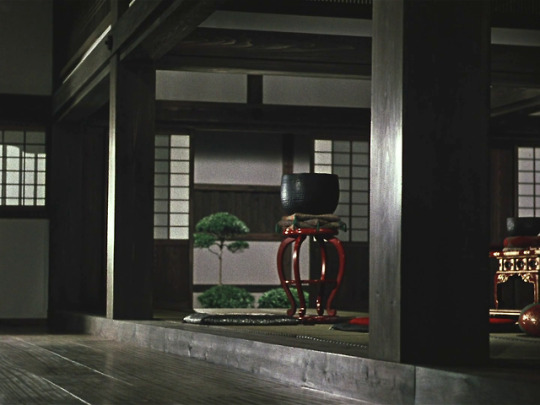
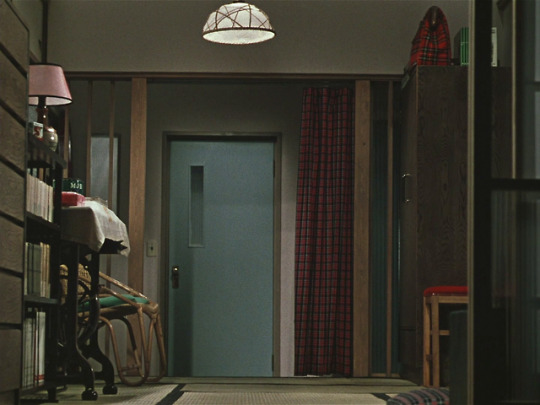
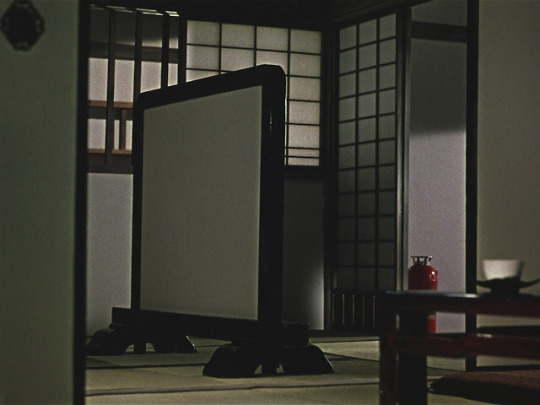
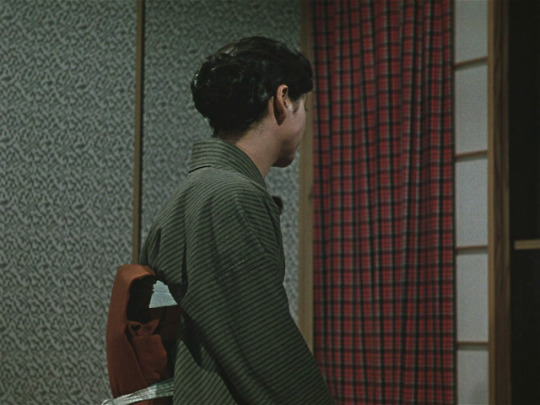
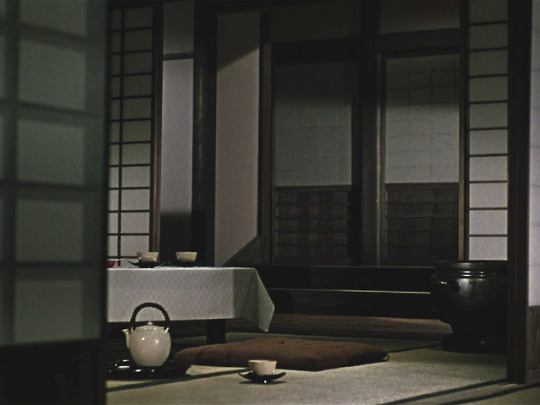
Akibiyori (Yasujirô Ozu, 1960).
#yasujirô ozu#setsuko hara#yôko tsukasa#yûharu atsuta#yoshiyasu hamamura#tatsuo hamada#toshikazu sugiyama#toshio takahashi#akibiyori#akibiyori (1960)#late autumn#late autumn (1960)
173 notes
·
View notes
Link
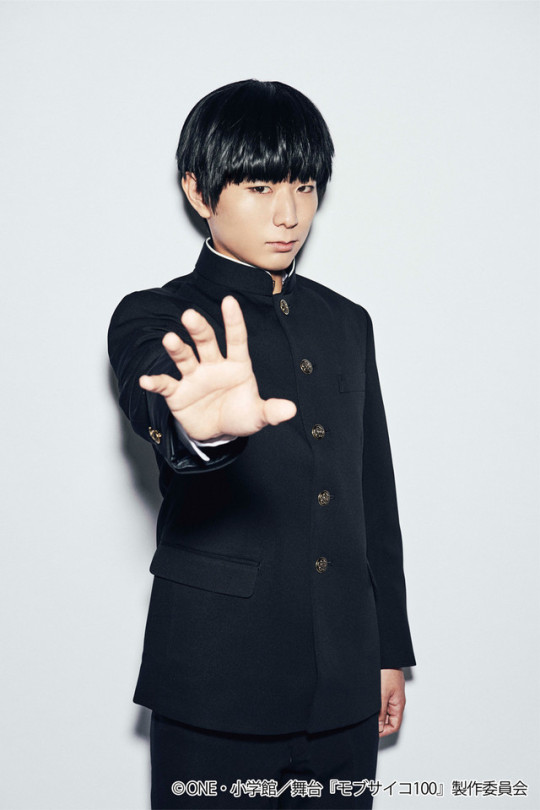
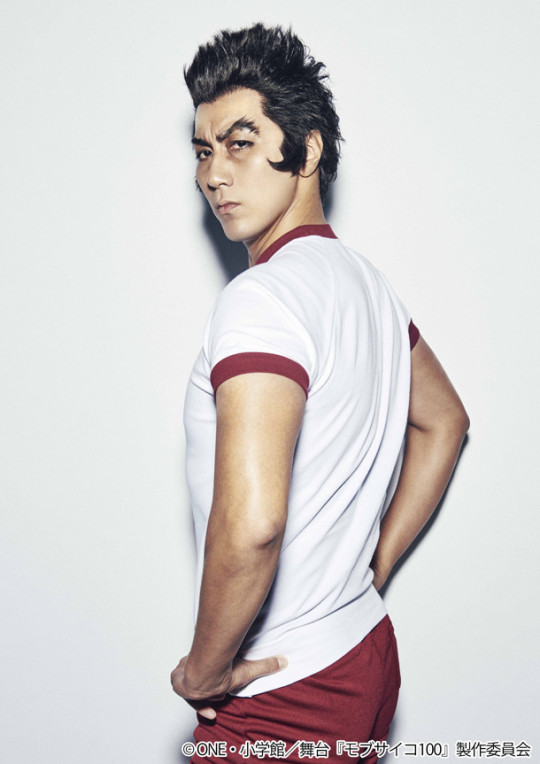
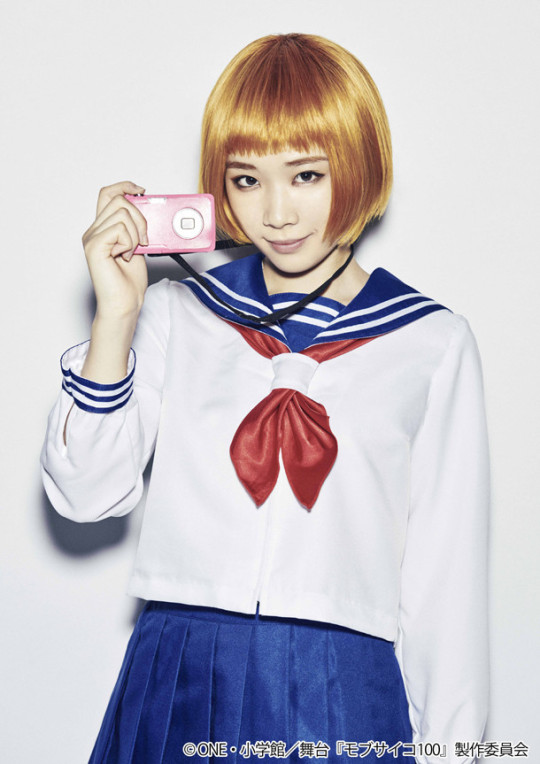


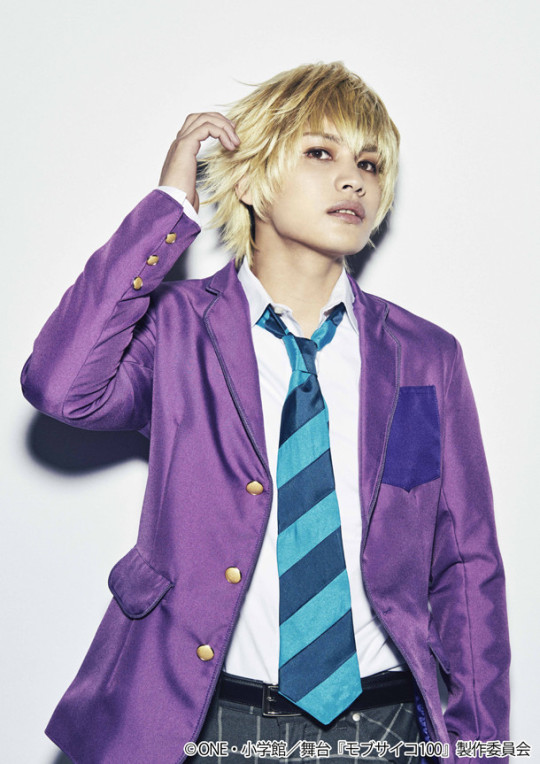
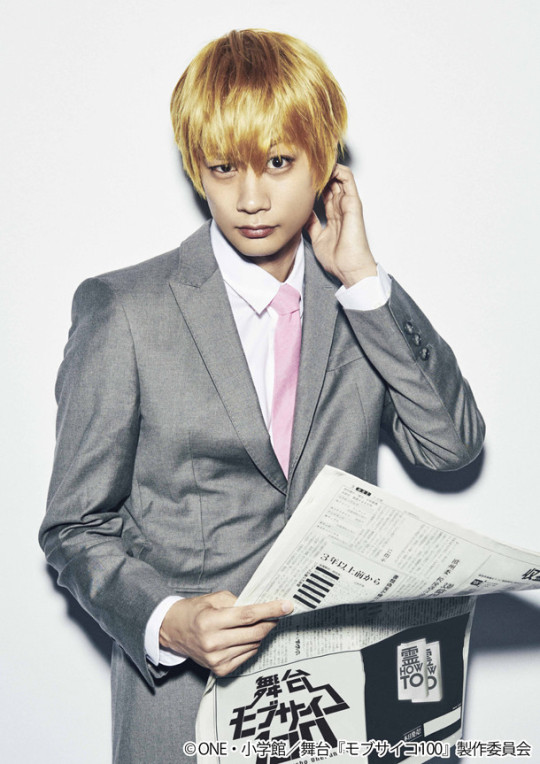
#Mob Psycho 100#one#Marina Tanoue#Setsuo Ito#Gaku Matsumoto#Keita Kawajiri#Miyu Suenaga#Naoya Gōmoto#Ryōma Baba#Takeshi Nadagi#Takuya Kawaharada#Tatsuo Hamada#Yūta Hoshino#Yūya Kido
2 notes
·
View notes
Photo
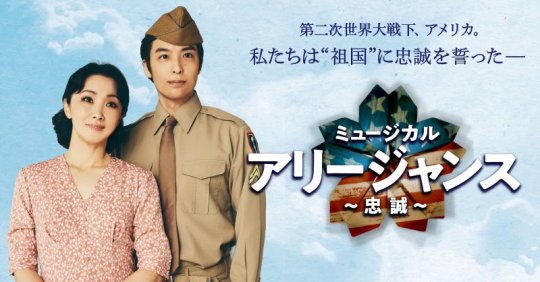


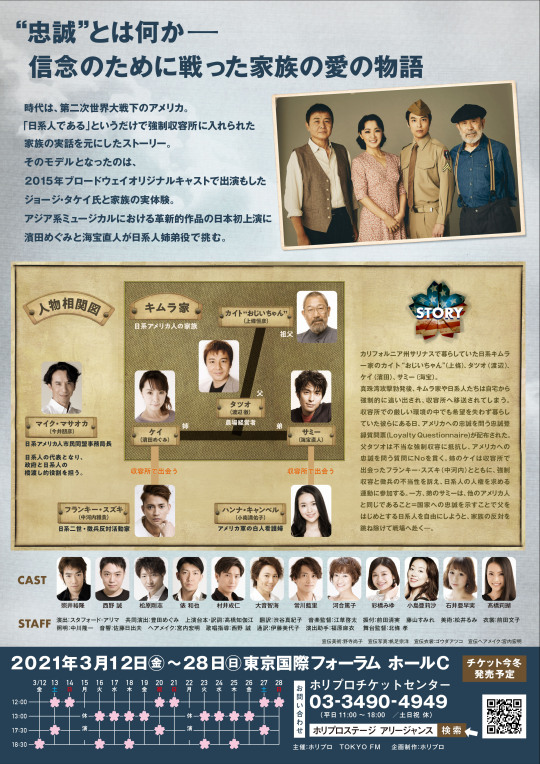
Promotional pictures of Allegiance Japanese production (2021)
March - April, 2021 | Tokyo / Nagoya / Osaka
濱田めぐみ Megumi Hamada (Kei Kimura) 海宝直人 Naoto Kaiho (Sammy Kimura) 中河内��貴 Masataka Nakagauchi (Frankie Suzuki) 小南満佑子 Mayuko Kominami (Hannah Campbell) 上條恒彦 Tsunehiko Kamijo (Sam Kimura/Ojii-chan) 今井朋彦 Tomohiko Imai (Mike Masaoka) 渡辺徹 Toru Watanabe (Tatsuo Kimura)
照井裕隆 Hirotaka Terui, 西野誠 Nishino Makoto, 松原剛志 Tsuyoshi Matsubara, 俵和也 Kazuya Tawara, 村井成仁 Naruhito Murai, 大音智海 Tomomi Oto, 常川藍里 Airi Tsunekawa, 河合篤子 Atsuko Kawai, 彩橋みゆ Miyu Ayahashi, 小島亜莉沙 Arisa Kojima, 石井亜早実 Asami Ishii, 髙橋莉瑚 Rico Takahashi
Translation by 渋谷真紀子 Makiko Shibuya & 高橋知伽江 Chikae Takahashi Directed by Stafford Arima
#allegiance#allegiance musical#asiantheatrenet#george takei#stafford arima#japanese internment#musical theatre#japanese theatre#broadway#allegiancejp2021#japanesetheatre#picpost#newpost
77 notes
·
View notes
Note
I saw your headcanon on Papa Hamada and I'd like to give my own in return. I believe Hiro and Tadashi's dad's name is Tatsuo and their mom is Katherine (Kat for short) and I know a lot of people headcanon one or both of their parents being geniuses, but I think Tatsuo was more of a goofball and homekeeper while Katherine ran the cafe with her sister, Cass
I like your headcanon! Tatsuo and Katherine are both great names. Especially with Cass and Kat, they’re good sister names and definitely agree that they would be the dynamic duo running the Lucky Cat Cafe.
I can certainly see Papa Hamada being a goofball like my own headcanon, but I do like yours of him being the home keeper while Kat and Cass run the cafe. Since Tatsuo would probably tinkering with robot builds with the younger Tadashi and Hiro at home.
In all cases, I feel like he would still have a massive influence over Tadashi growing up.
6 notes
·
View notes
Text
Thanked to Hamada Tatsuo, whenever I saw a child actor in toku, the first thought that crossed my mind was:
‘‘This kid going to be an Ultra/Main Rider/Red Ranger someday.’‘
10 notes
·
View notes
Text
Rólad nem mondok le
read it on the AO3 at https://ift.tt/JZCPfT5
by BlackAnde
Hihetetlenül kedves, támogató, szorgalmas. Nagy testvér, unokaöcs és diák. Mindig ott van, amikor az embernek szüksége van rá. Energikus, jó humorérzékkel. A SFIT egyik kiemelkedő tanulója. Ez lenne Hamada Tadashi.
Ezzel szemben Noiz (későbbi becenevén Usagi) egy informatikai zseni, minden számítástechnikai eszközzel könnyen boldogul. Első, sőt második pillantásra is egy magának való zárkózott alak. Határozottan NEM az akivel egy kávé mellett leülhetsz beszélni. Ugyanakkor mint sokaknak, neki is megvannak a maga, mélyen őrzött titkai. Többek között a neve.
Mi következik abból ha ezek ketten találkoznak az egyetemen egy véletlen és Callaghan professor közrejátszásával?
Ez a történet a Big Hiro 6 eseményei előtt, megközelítőleg másfél évvel veszi kezdetét. Mikor Hiro még középiskolába jár.
Words: 1536, Chapters: 1/?, Language: Magyar
Fandoms: Big Hero 6 (2014), DRAMAtical Murder - All Media Types
Rating: Mature
Warnings: Graphic Depictions Of Violence
Categories: F/M, M/M
Characters: Noiz (DRAMAtical Murder), Tadashi Hamada, Hiro Hamada, Fred | Fredzilla, Honey Lemon (Big Hero 6), Wasabi-No Ginger, Go Go Tomago, Baymax (Big Hero 6), Seragaki Aoba, Clear (DRAMAtical Murder), Cass Hamada, Sei (DRAMAtical Murder), Koujaku (DRAMAtical Murder), Mink (DRAMAtical Murder), Ren (DRAMAtical Murder), Toue Tatsuo, Robert Callaghan, Abigail Callaghan
Relationships: Tadashi Hamada/Noiz (DRAMAtical Murder)
Additional Tags: Slow Burn, Idiots in Love
read it on the AO3 at https://ift.tt/JZCPfT5
0 notes
Video
youtube
Film: Tokyo Story (1953) Language: Japanese Subtitles: English
Director: Yasujirō Ozu Producer: Takeshi Yamamoto Writer: Kōgo Noda Screenplay: Kōgo Noda, Yasujirō Ozu Cast: Chishū Ryū, Chieko Higashiyama, Setsuko Hara Music: Kojun Saitō Production Design: Tatsuo Hamada Costume: Taizô Saitô Cinematography: Yūharu Atsuta Editor: Yoshiyasu Hamamura Production: Shôchiku Eiga Distributor: Shôchiku Eiga
Description: Tokyo Story is a 1953 Japanese drama film directed by Yasujirō Ozu. It tells the story of an aging couple who travel to Tokyo to visit their grown children. The film contrasts the behavior of their children, who are too busy to pay them much attention, and their widowed daughter-in-law, who treats them with kindness. Released in Japan in 1953, it did not immediately gain international recognition and was considered "too Japanese" to be marketable by Japanese film exporters. It was screened in London in 1957 and won the inaugural Sutherland Trophy the following year, and received praise from US film critics after a 1972 screening in New York City. Tokyo Story is widely regarded as Ozu's masterpiece and is often cited as one of the greatest films ever made. In 2012, it was voted the best film of all time in a poll of film directors by Sight & Sound magazine. Tokyo Story was inspired by the 1937 American film Make Way for Tomorrow, directed by Leo McCarey.
0 notes
Text
Nuevo vídeo promocional de los cortos del Anime Tamago 2017.
Los cortos se estrenarán en marzo.
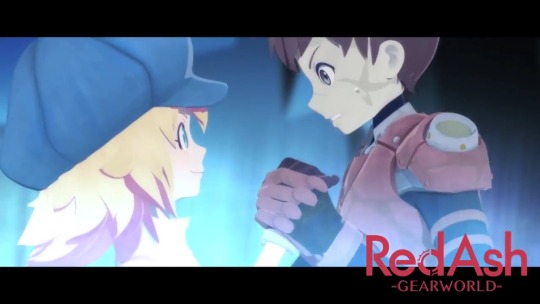
La Asociación de Animaciones Japonesa (AJA) comenzó la transmisión del segundo vídeo promocional extendido para los cuatro cortos escogidos del proyecto "Anime Tamago" (antiguamente "Anime Mirai") del 2017. Como en años anteriores, los cortos Anime formarán a jóvenes animadores en el puesto de trabajo como parte del "Proyecto de Formación Jóvenes Animadores" de la Agencia de Asuntos Culturales del Gobierno Japones. AJA también comenzó la transmisión de un vídeo promocional para los cortos.
youtube
Corto colaboración entre WAO Corporation, Studio Live y SSS-Studio
Titulo: "Zunda Horizon"
Director: Hiroshi Takeuchi
Productor: Kiyomitsu Aoki, Sakiko Okutsu
Diseño de personajes original: Ninico Edomura
Director de animación/Diseño de personajes: Risa Suzuki
Reparto nuevo:
Satomi Satou como Zunko Tohoku
Himika Akaneya como Kiritan Tohoku
Ibuki Kido como Itako Tohoku
Rika Momokawa como Usagi Chūgoku
Koyuki Tanaka como Metan Shikoku
Nozomi Nishida como Sora Kyushu
Maria Sashide como Chanko Ōedo
Ayano Hamaguchi como Tsurugi Chubu
Ayaka Imamura como Shinobi Kansai
Aoi Koga como Awamo Okinawa
Ayaka Shimizu como Meron Hokkaido
Yuina Itou como Zundamon
Zunko Tohoku puede volver cualquier mochi en deliciosos zunda mochi disparando con su Flecha Zunda. Junto con Kiritan Tohoku, Itako Tohoku, Usagi Chuugoku, Metan Shikoku y Sorara Kyushu, a ella le gusta comer zunda mochi mientras se llena de felicidad. Chanko Oedo conduce por el contrario la Fábrica de Natto junto con sus compañeros Tsurugi Chubu, Shinobi Kansai, Awamo Okinawa y Meron Hokkaido. Sin embargo, el zunda y el natto utilizan el mismo tipo de frijol, el edamame utilizado en el zunda y las semillas de soja utilizadas en el natto se cosechan en diferentes momentos, y el edamame es cosechado primero. Como resultado, los miembros de la fábrica de Natto tienen miedo de una disminución en la cantidad de semillas de soja cosechadas. Chanko envía a Awamo Okinawa y Hokkaido Meron a la casa de Zunko para asesinarla, pero un tercer poder hace su aparición.
Los tres cortos restantes del Anime Tamago 2017 son los siguientes:
Corto de Studio 4°C:
Titulo: "Red Ash -Magicicada-" (Red Ash -Gearworld-)
Director: Yuta Sano
Productor: Yuka Hisae
Director de animación: Yasuyuki Shimizu
Director de animación 3D/Diseño de personajes: Chiaki Imanaka
Reparto:
Yuuki Kaji como Beck
Rikumi Moriwaki como Tyger
Fumiko Uchiwara como Call
Youhei Hamada como Deny
Norito Abe como Safari
Masanori Takeda como Stripe
En un mundo futurista, los "Nanorace” (Nano Raza), personas cuyos genes contienen nanomáquinas que les otorgan habilidades especiales, son controlados y sufren el perjuicio de los "Purerace" (Raza Pura), los seres humanos normales. Beck, un cazador legendario con el poder de "Red Ash", tiene como objetivo continuar con el procedimiento quirúrgico para convertirse en Purerace. Junto al gran mecánico pero tímido Tyger, utilizan su máquina paralela para viajar al viejo mundo, haciendo trabajos peligrosos. Un día, de repente se encuentran con Call, una chica perseguida por el dúo de Safari y Stripe. Call, Beck y Tyger viajan juntos al mundo relojería. Pero Safari, Stripe, y su líder Deny, los persiguen tenazmente y están finalmente en condiciones de hacer su ataque a Beck y sus amigos.
Corto de Nippon Animation
Titulo: "Genbanojou"
Director: Takumi Douyama
Productor: Yuu Furukubo
Director de animación: Hirofumi Nakata
Diseño de personajes: Shin Takemoto
Reparto
Katsuyuki Konishi como Genbanojou
Rina Sato como O-Natsu
Natsuki Hanae como Shinzaemon
Tamano Rina como Hana
Reiko Suzuki como Chiyo
En una tierra en forma de cono llamada Kikyougahara en la provincia de Shin, vive una chica llamada Hana. Ella es una chica dulce, que siempre piensa en su familia, en particular, su bisabuela Chiyo, a quien cariñosamente llama "Granny". Un día, un grupo de entretenimiento ambulante llamado Natsugawa Genzaemon pasa por el lugar, y los aldeanos les dan la bienvenida con gusto. Al terminar su actuación y recibir su reconocimiento, el líder del grupo le pide a Hana un poco de "oyaki", su comida favorita, y él se transforma en un zorro para su sorpresa. Resulta ser que el líder Genbanojou, y sus compañeros O-Natsu y Shinzaemon, son todos zorros que han asumido formas humanas. Genbanojou negocia a toda prisa con Hana, diciéndole que a cambio de mantener su secreto, él le concederá un deseo. Ella responde: "Quiero que Granny vea las flores de cerezos".
Corto de Studio Comet
Titulo: "Charanpo Land no Bouken"
Director: Shin Misawa
Productor: Shunichi Ozao
Director de animación: Tatsuo Honda
Diseño de personajes: Narumi Shimoji
Reparto
Chika Sakamoto como Kometora
Hitomi Ohwada como Pyon
Fukushi Ochiai como Gunma
Ikuji Nose como Profesor Akan
Taketora como Poncho
Sayaka Ohara como el Espíritu del Árbol Baobab
En el otro extremo de los mares del Sur, donde nadie se había atrevido a ir, existe una isla llamada Charanpo Land. En el centro de la isla hay un árbol baobab gigante, que produce muchos huevos cada día. Dentro de los huevos hay alimentos, ropa y otras necesidades diarias. Los habitantes de la isla viven una vida sin preocupaciones, dependiendo de los huevos. Pero últimamente, los huevos han empezado a aparecer vacíos cada vez más, lo que hace que los habitantes se incomoden. Entonces, un día, con un estruendo, y una explosión de luces de arco iris, el baobab produjo un huevo de curioso aspecto. A la mañana siguiente, el jefe del pueblo Poncho dice a los habitantes que tienen que encontrar ese huevo. Ahora el tigre Kometora y un grupo de niños deben encontrar el huevo dentro del bosque.
El comité de selección de este año consiste en
Keisuke Iwata (Presidente de AT-X)
Mitsuko Okamoto (Universidad de las Artes de Tokio, Decano de Facultad de Cine y Nuevos Medios)
Gisaburou Sugii (Director de Anime)
Michiko Suwa (Productor ejecutivo del departamento de Anime de Yomiuri TV)
Ryousuke Takahashi (Director de Anime)
Toshiya Matsushita (Tokuma Shoten, Editor en jefe de Animage)
Hiro Maruyama (MBS, Tokyo Branch, Director asistente)
Masahiko Minami (Presidente de Bones)
El corto "Red Ash -Magicicada-" de Studio 4°C es el único corto en 3D CG en la selección. La compañía de juegos Comcept lanzó una exitosa campaña de recaudación de fondos Kickstarter para el proyecto con el lanzamiento de su juego Red Ash: The Indelible Legend el año pasado.
"Zunda Horizon" se basa en un personaje original creado por SSS-Studio llamado Zunko Tohoku, para apoyar a las víctimas en la región de Tohoku, durante el terremoto y tsunami de Tohoku. Ninico Edomura creó el personaje, pero ella lo libero de derechos de autor, por lo que cualquier persona puede utilizar el personaje de forma gratuita sin necesidad de un permiso de SSS para hacerlo. Zunko Tohoku fue parte de una exitosa campaña de crowdfunding en 2013 para crear un software de Vocaloid para el personaje. SSS lanzó una exitosa campaña de crowdfunding para el personaje del año pasado para crear un Manga y un libro de ilustraciones.
Aparte de Studio 4°C, todos los estudios participantes son nuevos en el proyecto Anime Tamago. El corto entre WAO Corporation, Studio Live, y SSS-Studio es también la primera vez que un proyecto ha sido aceptado como una producción colaborativa. El corto de colaboración se centrará en el personaje mascota de Tohoku Zunko.
Todos los cortos se mostrarán en Marzo del 2017.
4 notes
·
View notes
Text
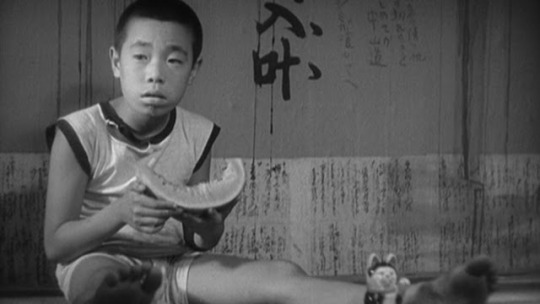
Tomio Aoki in A Story of Floating Weeds (Yasujiro Ozu, 1934)
Cast: Takeshi Sakamoto, Choko Iida, Koji Mitsui, Rieko Yagumo, Yoshiko Tsubouchi, Tomio Aoki, Reiko Tani. Screenplay: Tadao Ikeda, Yasujiro Ozu. Cinematography: Hideo Shigehara. Art direction: Tatsuo Hamada. Film editing: Hideo Shigehara.
This is the first, silent version of a film that Ozu remade with sound and in color in 1959, when it was released as Floating Weeds. Yes, 1934 is late to be making silent films, but Ozu was following the lead of the Japanese film industry, which didn't switch to sound until 1931 -- and Ozu waited till 1936 to make a talkie. Takeshi Sakamoto plays Kihachi, the head of a troupe of traveling players who find themselves in a village where Kihachi has a former mistress, Otsune (Choko Iida), with whom he had a son, Shinkichi (Koji Mitsui). The now almost-grown son has always known Kihachi as "Uncle," because Kihachi has kept his parentage secret, not wanting him to follow in his footsteps as an actor. But when Otaka (Rieko Yagumo), an actress in the troupe and Kihachi's most recent mistress, discovers the secret, she decides to take revenge by asking a younger actress, Otoki (Yoshiko Tsubouchi), to seduce Shinkichi. The revenge backfires when Otoki falls in love with the young man. As usual, Ozu's sympathetic view of human relationships carries the film, giving depth to the somewhat slight story. And the glimpses of the world of the traveling players is both fascinating and funny. The lovely cinematography is by Hideo Shigehara, who filmed and sometimes edited many of Ozu's pre-war movies.
4 notes
·
View notes
Note
best japanese wrestlers from the 80s/90s nobody talks about (bonus points: best jmma fighters who nobody talks about)
Hmm...Tatsuo Nakano, Naoki Sano, Masahito Kakihara,Gran Hamada, Osamu Kido, Osamu Nishimura, Mitsuya Nagai.
MMA...all the Japanese in 90′s Pancrase who aren’t Suzuki or Funaki
5 notes
·
View notes
Photo










Akibiyori (Yasujirô Ozu, 1960).
#late autumn (1960)#akibiyori (1960)#yasujirô ozu#yûharu atsuta#yoshiyasu hamamura#tomiji shimizu#tatsuo hamada#toshikazu sugiyama#akibiyori#late autumn#otoño tardío#yasujiro ozu
196 notes
·
View notes
Photo
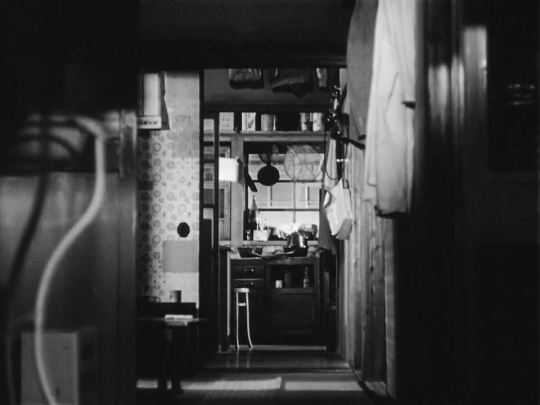
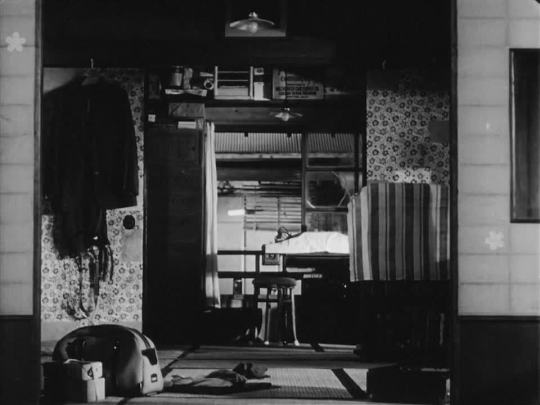








Interior space: Tokyo Monogatari / Tokyo Story (1953) Yasujiro Ozu Production Design and Art Direction : Tatsuo Hamada,
#Tatsuo Hamada#Yasujirô Ozu.#tokyo monogatari#tokyo story#1950s Japanese cinema#art direction#production design#interiors
142 notes
·
View notes
Photo


Allegiance - Japanese production (2021)
March 2021 at Tokyo International Forum | Official Site
濱田めぐみ Megumi Hamada (Kei Kimura)
海宝直人 Naoto Kaiho (Sammy Kimura)
中河内雅貴 Masataka Nakagauchi (Frankie Suzuki)
小南満佑子 Mayuko Kominami (Hannah Campbell)
上條恒彦 Tsunehiko Kamijo (Sam Kimura/Ojii-chan ?)
今井朋彦 Tomohiko Imai (Mike Masaoka ?)
渡辺徹 Toru Watanabe (Tatsuo Kimura)
照井裕隆 Hirotaka Terui, 西野誠 Nishino Makoto, 松原剛志 Tsuyoshi Matsubara, 俵和也 Kazuya Tawara, 村井成仁 Naruhito Murai, 大音智海 Tomomi Oto, 常川藍里 Airi Tsunekawa, 河合篤子 Atsuko Kawai, 彩橋みゆ Miyu Ayahashi, 小島亜莉沙 Arisa Kojima, 石井亜早実 Asami Ishii, 髙橋莉瑚 Rico Takahashi
Translation by Makiko Shibuya Directed by Stafford Arima
#allegiance#allegiance musical#asiantheatrenet#george takei#megumi hamada#naoto kaiho#japanesetheatre#allegiancejp#allegiancejp2021#picpost#newpost
1 note
·
View note
Text

Ineko Arima, Fujiko Yamamoto, and Yoshiko Kuga in Equinox Flower (Yasujiro Ozu, 1958)
Cast: Shin Saburi, Kinuyo Tanaka, Ineko Arima, Yoshiko Kuga, Keiji Sada, Teiji Takahashi, Miyuki Kuwano, Chishu Ryu, Chieko Naniwa, Fujiko Yamamoto. Screenplay: Yasujiro Ozu, Kogo Noda, based on a story by Ton Satomi. Cinematography: Yuharu Atsuta. Art direction: Tatsuo Hamada. Film editing: Yoshiyasu Hamamura. Music: Takanobu Saito.
Equinox Flower is Yasujiro Ozu's first color film. Once again he lagged behind film industry trends -- the first color film in Japan was made in 1951 -- and managed to anger the Japanese film industry by using the German-made Agfa color process instead of Fuji film because he thought the reds in Agfa film were truer. American viewers may be struck by how the movie often seems to be a Japanese translation of the American family comedy: think Father of the Bride (Vincente Minnelli, 1950). It centers on Wataru Hirayama (Shin Saburi), who finds his wife and daughters scheming against him when he insists on arranging the marriage of his elder daughter, Setsuko (Ineko Arima). When a young man he has never met before, Masahiko Taniguchi (Keiji Sada), comes to his office one day to ask for Setsuko's hand, Hirayama is furious, and not only forbids the marriage but also insists that Setsuko, who has met Taniguchi at the place where she works, be confined to home. Eventually, things work out for the young couple, but not before Hirayama has learned a lesson about the way the roles of the sexes have changed in Japan. In fact, when we first see Hirayama, he is giving a speech at a wedding, indicating his preference for parental approval and noting that even though their own marriage had been arranged, he and his wife, Kiyoko (Kinuyo Tanaka), who is sitting silently beside him, made a go of it. We will soon learn that Kiyoko is not quite so submissive as she seems. The bite that underlies this quite charming comedy lies in its portrayal of the post-war Japanese male, the warrior turned salaryman, most effectively seen in an episode in which Hirayama, after reluctantly attending the wedding of Setsuko and Taniguchi, goes to a reunion of his old classmates, who sing songs about the glory of the Japanese warrior though their own lives consist of office work and golf.
2 notes
·
View notes